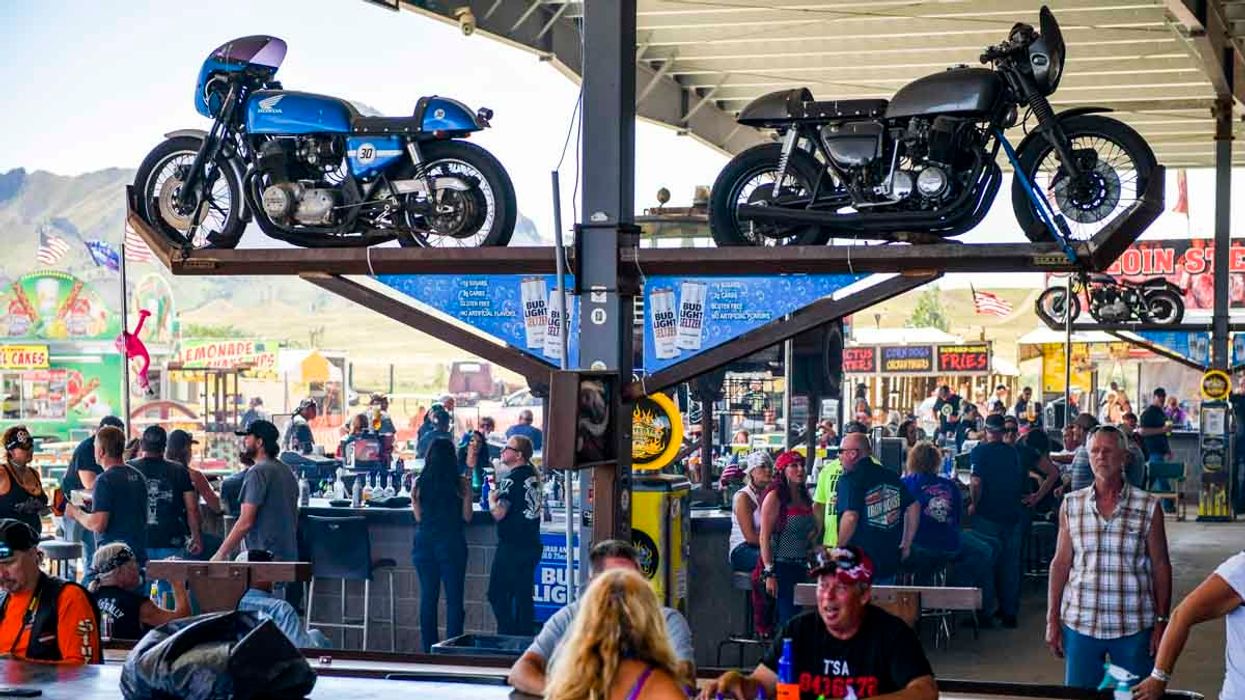
Michael Ciaglo/Getty Images

Contrary to media predictions.
Over 460,000 motorcyclists descended upon the Black Hills of South Dakota for the annual Sturgis motorcycle rally, the largest event in the entire country this year – without masks or sacred social distancing protocols. Yet no epidemic of coronavirus was ignited by this mother of all mass gatherings, contrary to media predictions.
With nearly every state still partially shut down, South Dakota, like Sweden, never had a shutdown or a mask mandate. Then, in the second week of August, the state hosted the largest, most raucous event in the country. Initially, the media laid the groundwork to spread pandemic panic porn about the impending spread of the virus. Now you don't hear much about it. Why not? Because there is no epidemic to speak of.
Meanwhile, countries with the strictest lockdowns and mask mandates, like Peru and the Philippines, have more deaths than any other country. The enduring lesson? Lockdowns and mask mandates play absolutely no role in mitigating a virus that seems to spread where it spreads, when it spreads, and to whom it spreads based on its own patterns.
South Dakota is our version of Sweden. Governor Kristi Noem refused to implement lockdowns or mask mandates. The state ranks #40 in coronavirus deaths per capita and has the best economy in the country to show for it.
The media and public health officials predicted the state would blow its streak by allowing a large national gathering to take place from August 7 to August 16. "Come mid-August to late August, early September, Sturgis will have one hell of an imprint on this country," warned Michael Osterholm, head of the Center for Infectious Disease Research and Policy at the neighboring University of Minnesota. The Sioux Nation tribal government even employed efforts to block bikers from their lands.
In fact, so strong was the fear of spread that halfway around the country, New Hampshire Governor Chris Sununu was so spooked by images of Sturgis that he mandated mask-wearing on gatherings of more than 100 people in the "Live Free or Die" state, which previously had no mask mandate of any sort.
So where is the monumental imprint on the country? There are zero deaths reported, and I have only seen one hospitalization alleged to be associated with Sturgis attendance. The epidemic generated by the rally was so powerful that they evidently had to conduct mass testing to discover a "CASEdemic" of over 100 cases – and all those tested in one city were asymptomatic at the time of testing.
Let's put that in perspective: According to the COVID Tracking Project, there were 464,000 positive cases confirmed nationwide from August 7 to August 17. That is roughly 1,400 cases per million people. Compare that to just over 200 cases per million among Sturgis attendees, at least thus far, and we can see that the massive nationwide imprint predicted is imperceptible, even if we focus on testing of asymptomatic individuals.
In other words, South Dakota likely achieved a meaningful degree of herd immunity, just like Sweden, and has done a good job shielding sicker people. It has been reported that attendance at Sturgis dropped among the senior population, which was smart, and likely explains the almost nonexistent rate of hospitalizations caused by attendance.
But more broadly, it demonstrates the reality that masks and lockdowns simply make no difference in the trajectory and timing of the epidemic. Had Gov. Kristi Noem taken the advice of the doomsayers, she would have tanked her state's economy. Instead, her state is riding high. Two weeks ago, Governor Noem politely rejected federal assistance with unemployment, noting that her state had the lowest unemployment rate and had already recovered 80% of the lost jobs. "We're the only state in the nation that didn't have extended unemployment benefits kick in because our insured unemployment rate has been the lowest in the nation," she said.
If Sturgis in South Dakota broke every rule of the COVID-19 cult with success, then Peru is the polar opposite. The country used heavy-handed law enforcement to force one of the longest and most draconian shutdowns. In mid-March, President Martín Vizcarra ordered all cars off the road and an 8 p.m. curfew, and residents were only allowed to leave their homes even during the day for food or medical care. Mask-wearing was 100% mandated everywhere. This was imposed for 15 weeks. In other words, everything the media and leftist politicians have asked for.
The result? Peru has now surpassed Belgium as the country with the most deaths per capita in the world. At 871 COVID-19 deaths per 1 million people, Peru has 4.6 times the number of deaths per capita of South Dakota, which had no lockdown or mask mandate.
The dichotomy between South Dakota, especially after the Sturgis event, and Peru is one of many data points demonstrating that human non-clinical intervention efforts simply do not stop a respiratory virus from spreading. We are seeing this in the Philippines, Hawaii, Japan, and many other places with strict lockdowns. The virus spreads where it spreads. The only difference is that the Pacific Rim countries appear to be largely immune to the serious symptoms, while countries like Peru appear to have little cross-immunity. But that has nothing to do with lockdown.
At this rate, it's not just motorcyclists who will descend upon South Dakota. We might all want to move there to fulfill the dream of our Founding Fathers as the last beacon for freedom and prosperity.
Daniel Horowitz
Blaze Podcast Host